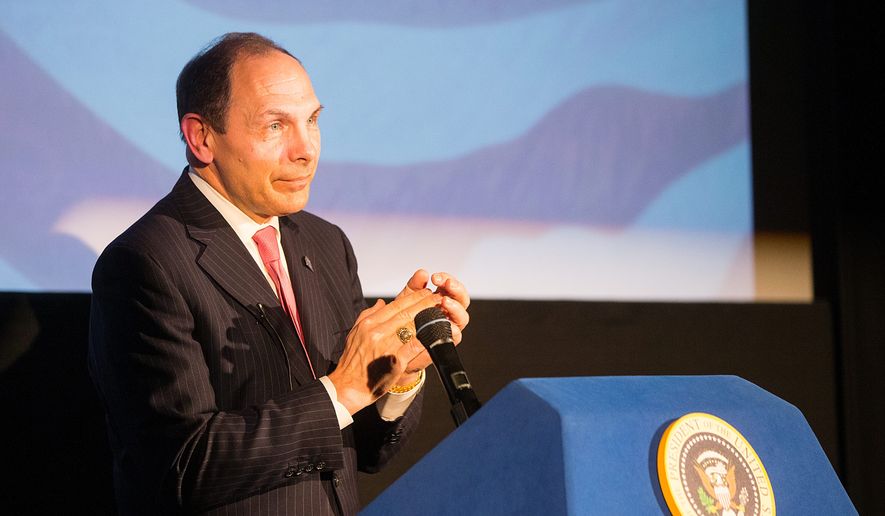In December 2010, a fruit seller in Sidi Bouzid, Tunisia, doused himself with gasoline and lit himself on fire in front of a provincial government office. That act of despair — and the man’s subsequent death — ignited a revolution of consciousness in Tunisia and throughout the Arab world.
The street vendor’s protest touched off a surge of public outrage with the corruption, abuses and failures of governments throughout the region. It was the turmoil that became known as the Arab Spring.
Last month, a 51-year-old veteran set himself on fire in front of a Veterans Administration facility in Northfield, New Jersey. His comparable act of despair should be a call to another political revolution here in the United States — one focused on transforming the bureaucracies that are failing many of the most vulnerable Americans, not least our veterans.
No American should be satisfied with the incompetence and corruption exemplified by the VA. That the Department of Veterans Affairs is grievously sick has been evident since at least 2007, when the stories of neglect at Walter Reed Army Medical Center began to get public attention. We learned that the VA had wounded veterans recovering in deplorable conditions and that the carelessness and indifference of the administrators led to a number of deaths.
Over the next nine years, we have watched the bureaucracy try and fail to cure itself.
In 2014, VA Secretary Eric Shinseki resigned after press reports revealed that dozens of VA medical facilities had been hiding outrageously long wait times through fraudulent record-keeping and that tens of thousands of veterans had been waiting months or even years for appointments.
We later learned that more than 300,000 veterans may have died waiting for care.
Of course, firing the secretary did not fix a system that is corrupt, extraordinarily resistant to change and devoted to its own self-preservation. The new secretary, Robert McDonald, has attempted to fire several of the senior executives responsible for the wait-time fraud.
He has discovered that, due to public employee unions’ intransigence, it will take up to 700 days (two years!) before the agency actually succeeds in firing them. In the meantime, they could continue to receive full pay — in one case, $250,000 a year — at taxpayer expense.
And so the outrages continue. In an Inspector General’s report released this month, we learned that the person the VA appointed to fix the Phoenix VA’s wait-time scandal apparently manipulated wait times in her previous position as head of a VA facility in Vermont — and that her superiors knew it.
The week she took control of the Phoenix VA, the Daily Caller reports, “her superiors saw papers confirming the Vermont hospital had the same issues with wait-time falsification — with equally deadly results — as Phoenix.” In the IG report, the story continues, a litany of schedulers at White River [the Vermont facility] told identical stories about being instructed during [her] tenure to game the data to show that veterans were given instant appointments. Those who didn’t were told they would be punished. Multiple levels of supervisors enforced the instructions, all the way up to at least the patient-care chief.
In another report published this week, we learned that the backlog of appeals cases in the veterans benefits system approaches half a million. “We’re failing veterans,” Veterans Affairs Deputy Secretary Sloan Gibson said of the system. “This process is failing veterans. Nobody can defend the status quo here.”
In yet another case, we learned that the VA systematically and intentionally declined to pay its proper share of veterans’ emergency room bills, causing many veterans to face enormous fees:
In a recent court decision, the U.S. Court of Appeals for Veterans Claims … held VA was violating federal law using an unlawful interpretation of the statute. That statute required VA to pay for all uncovered costs related to veterans’ emergency room (ER) services.
VA surreptitiously interpreted the statute to justify denial of payments to veterans with insurance that would cover part but not all of emergency room visits.
The interpretation resulted in veterans getting stuck with enormous bills following emergency room visits. According to the National Law Journal article, the VA stuck veteran Richard Staab with an uncovered portion of his bill of $48,000.
It is obvious that the VA is not going to fix itself, and so the task falls to Congress to impose real change. The sickness of the system is so deep that, like a body infected with life-threatening cancer, the agency will need radical surgery if it is to survive. And a radical surgery is what Congress should perform in completely overhauling the agency. It is time to put veterans first, not bureaucrats.




Please read our comment policy before commenting.